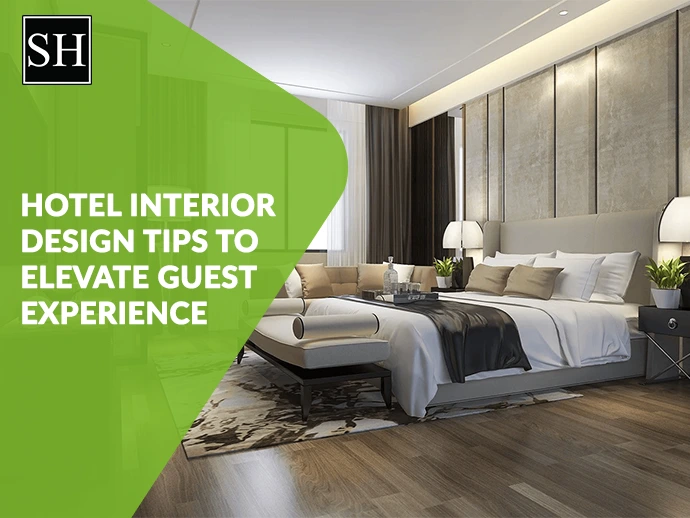
Best Hotel Interior Design Styles to Elevate Spaces
Have you ever stepped into a hotel and immediately felt happy, relaxed and wowed? Or perhaps a little lost or uneasy? Much of that sensation is related to hotel interior design. It's far more sophisticated than simply selecting pretty furniture or color schemes. It's about building spaces that function well, feel good, feel pleasant as well as luxurious.
Consider it as a quiet host that welcomes visitors, directs them, comforts them and leaves a lasting impression. In the vast world of hotels, where visitors have so many options, the appearance and ambiance of your hotel can be the deciding factor. Good design isn't an expense, it's an investment that can result in happier guests, more positive reviews, repeat business and even being able to raise your rates as it makes your hotel more noticeable.
Furnish Your Hotel with Style and Substance Discover premium hospitality furniture crafted for comfort, durability, and design excellence. Whether you're outfitting guest rooms, lobbies, or public spaces—top U.S. manufacturers deliver custom solutions that elevate every stay.
First Impressions and Brand Perception
The moment a visitor enters the hotel, they begin making an impression and this initial impression is greatly influenced by the hotel room interior design. An effectively designed space immediately conveys quality, concern, and the hotel's distinctive character or identity. If your hotel is high-end, then the design must whisper sophistication. If it is to be on the affordable end, then the design must yell clean, smart, and efficient. Your choice in design immediately shapes the expectations guests have about your brand as well as what they will look forward to when it comes to service.
Key Principles of Effective Hotel Design
Creating a great hotel space involves balancing several important ideas. It's not just about looks but it's also about how the space works for both guests and staff.
Functionality Meets Aesthetics
This is the main goal of a good hotel interior design, the room has to be pretty but also functional. Picture a gorgeous lobby sofa that's just awful to sit on, or a gorgeous bathroom where there's no place to store your toiletries. That's poor design. Good design is:
- Easy Navigation: Visitors must be able to navigate freely, locate the reception counter, lifts, or restaurant without getting lost.
- Practical Spaces: Furniture must be logically positioned. Desks in rooms require adequate lighting and plugs within easy reach and luggage racks must be easily accessible.
- Staff Efficiency: Staff should also be taken into consideration, making sure that the service area is approachable and is easier to clean.
- Purposeful Beauty: Each design decision, from floor plan to smallest ornamentation, must have a rationale behind it, adding both to the appearance and the functionality of the space.
Space Optimization Techniques
Hotel space is precious so getting the most out of each square foot is essential, particularly in high-cost city areas or smaller hotels. Fancy hotel interior design applies strategies such as:
- Multi-purpose Furniture: Consider ottomans with storage, beds that double as sofas, or lobby tables with integrated charging stations.
- Vertical Space: Utilizing tall shelves, making the most of high ceilings, or even bunk beds in living rooms can optimize space.
- Innovative Arrangements: Using furniture to carve out separate spaces in one room (such as a sleeping nook and mini seating space within a guest bedroom).
- Light and Mirrors: Employing mirrors to create the illusion of larger, brighter spaces. Careful use of lighting can also open up spaces.
- Minimalism: Keeping things as simple looking as possible is a genuine way to keep things clutter free and also makes the furniture easy to be cleaned.
Balancing Comfort and Commercial Durability
Hotel furniture and finishes take a beating since they are used by hundreds or thousands of people every year. Therefore, everything must be comfortable for the guest but also incredibly durable.
- Comfort: Guests expect comfortable beds, supportive chairs, and soft textures. Comfort leads to relaxation and satisfaction.
- Durability: Materials need to withstand constant use, cleaning, spills, and luggage bumps so use high grades material as cheap retail furniture won't last.
- Maintenance: The finish that you use must be easy to clean and taken care of. Stains should be easy to remove, and surfaces should resist scratches and wear.
- Safety: Fire incidents in hotels is a common issue so the furniture must be fire resistant and also resistant from water and termites that can age the furniture quite early.
Designing for Different Hotel Spaces
Every room in the hotel holds and serves a specific purpose and furniture for each space are different. The different rooms such as the Senior living furniture come with different types of furniture materials that suit the purpose of its installation. Let us check a few spaces and how they must look, feel and function.
Lobby and Reception Area
It is the handshake of the hotel so it must look inviting, impressive, and efficient.
- Welcome: Make them feel they've arrived. The provision of comfortable seating for waiting guests is very important.
- Navigation: Easy-to-follow signage and built-in navigation to the reception desk are crucial. Guest flow should be efficiently handled through the design, even at busy check-in/check-out periods.
- Reception Desk: Must be operational for staff (computers, storage) yet pleasing to the eye and inviting.
- Atmosphere: Lighting, music, and fragrance can be used to produce the preferred mood – maybe peaceful and refined and dynamic.
- Brand Statement: This is the ideal location to present the hotel's style and brand identity using original art, architectural elements, or a distinctive color scheme.
Guest Rooms and Suites
This is the guest's personal haven where they seek comfort, functionality, and tranquility.
- The Bed: An excellent mattress, cushy pillows, and fresh, appealing bedding are not options but a must.
- Layout: The design of the hotel room must be intuitive. Simple access to the bathroom, closet, desk, and windows along with sufficient room to walk around.
- Lighting: Layered lighting is essential – strong overhead light, task lighting for reading or working, and softer ambient lighting for relaxation. Hotels can cover aside lamps as well.
- Workspace: If for business travelers, a working desk with decent lighting and easy access to power outlets/USB ports is required.
- Seating: A good and decent looking chair or a small sofa adds value to the hotel space.
- Storage: Sufficient closet space with hangers, drawers, and a luggage area.
- Bathroom: Cleanliness counts. Good lighting (particularly in front of the mirror), enough counter space, good towels, and functional hardware are a requirement. Walk-in showers are also gaining popularity.
- Technology: Simple-to-operate TV, dependable Wi-Fi, and enough charging stations.
- Atmosphere: The interior hotel room design should overall make it a peaceful and comfortable space to rest in, utilizing soothing colors, plush textures, and possibly some local flavors or artwork.
Conference Rooms and Business Centers
These areas must be professional, functional, and comfortable for extended periods.
- Flexibility: Spaces that can be set up for varying group sizes or meeting styles are worth it. Movable walls or modular furniture would work.
- Technology: Functional AV equipment (projectors, screens, sound systems), decent Wi-Fi, and lots of power outlets are a must. Video conferencing capacity is growing in importance.
- Comfort: Ergonomic chairs are crucial for long meetings. Good acoustics to minimize echo and noise distractions. Temperature control is important.
- Lighting: Bright, adjustable lighting suitable for presentations and note-taking. Natural light is a bonus.
- Professional Look: Clean lines, neutral colors, and minimal distractions create a focused environment. Branding can be subtle.
Restaurants, Cafes, and Bars
Atmosphere is everything here. The design sets the stage for the dining or drinking experience.
- Mood: Lighting is a big factor – warmer, dimmer lighting for dinner in the evening or for bars, brighter, more natural light for cafes or breakfast nooks.
- Seating: Tables in various sizes (two-place tables, booth tables, large group tables, stools) accommodate various guests and group sizes. Comfort is paramount.
- Layout: Must permit smooth service movement for personnel while facilitating comfortable spacing for visitors. Acoustics matter – noisy environments are not pleasant.
- Theme: The aesthetic should reflect the food and price. A high-end restaurant will have a dramatically different appearance and atmosphere from a coffee shop or a hip top-level bar. This is where a fancy hotel interior could truly come into its own.
- Durability: Tables, chairs, and flooring need to stand up to spills and traffic. Easy-to-clean surfaces are essential.
Wellness Spaces: Spas, Pools, and Fitness Centers
These areas are concerned with health, relaxation, and rejuvenation.
- Spas: Design should encourage calmness. Employ soothing color schemes, natural materials (wood, stone), gentle lighting, comfortable treatment tables, and maybe aromatherapy or soothing music. Privacy is essential.
- Pools: Safety first (non-slip floor). Design may feature comfortable lounge chairs, adequate lighting (underwater included), and possibly features such as plants or water features. Must be humidity- and pool chemical-resistant.
- Fitness Centers: Functionality is most important. Non-slip, durable flooring, proper ventilation and air conditioning, mirrors, area for various forms of exercise (cardio, weights, stretching), and built-in technology (TVs on equipment). Bright, stimulating lighting is usually desired.
Outdoor Spaces and Roof Lounges
These spaces increase the hotel's usable square footage and may be big draws.
- Comfort: Use comfortable outdoor-grade seating (weather-resistant material). Provide shade (umbrellas, pergolas) and, maybe, warming for chilly evenings.
- Views: Take advantage of any good view the site affords.
- Ambiance: Lighting is essential for evening use – string lights, lanterns, or landscape lighting can make an evening feel enchanting. Planting and landscaping provide life and softness.
- Functionality: Think about uses such as outdoor dining, lounging, or parties. Make surfaces durable and safe. Rooftop bars sometimes require a service area.
Interior Design Styles of Contemporary Hotels
Hotels use a number of different design styles to attract visitors and provoke specific moods. This mix appeals to different tastes, budgets and reasons for travel and ensures wider appeal. Each style is intended to create a particular mood, ranging from the streamlined convenience of contemporary design to the lavish comfort of traditional luxury hotel interior design or the laid-back feeling of bohemian chic. Some of the popular styles are mentioned below:
Contemporary and Minimalist
Contemporary and Minimalist hotel design includes plain lines, white-on-white tones, and bare essentials. It emphasizes functionality, high-quality materials, and simplicity, creating an elegant, serene atmosphere for the visitor.
- Appearance: Simple forms, clean lines, muted tones, frequently accented with flashes of color. Free from clutter. Emphasis on basic form and function.
- Atmosphere: Serene, elegant, utilitarian, cutting-edge.
- Materials: using flat surfaces, metal, glass and light wood to keep it as minimal as possible.
- Best Used On: Business hotels, contemporary city hotels, hotels that desire a clean, classic appearance.
Luxury and Boutique
Boutique and luxury hotel interiors are all about opulence and individual character. Interiors have rich materials, handmade furniture, selectively chosen art, and a signature theme, if required, to create a one-of-a-kind, memorable, and highly personalized guest experience.
- Appearance: Exquisite materials (marble, velvet, polished wood, brass), luxurious textures, distinctive details, bespoke furniture, frequently includes artwork and it can also be elegant and bold.
- Ambiance: Exclusive, sophisticated, luxurious, personalized, memorable. A genuine luxury interior design for hotels is all about attention to detail and quality.
- Materials: High-end finishes, designer lighting, bespoke pieces.
- Best For: Upscale hotels, distinctive independent hotels, hotels that want to offer a deluxe, unforgettable stay.
Industrial and Urban
Industrial and Urban hotel design emphasizes raw, unfinished elements like exposed brick, concrete, and metal ductwork. It uses functional furniture and often an all-one-color color scheme, creating a raw, edgy, loft-like, city feel.
- Look: Drawn from old warehouses or factories. Brick walls with exposed brick, visible pipes or ducts, concrete floors, metal accents, wood. Furniture could combine antique and contemporary pieces.
- Materials: Metal (steel, iron), distressed wood, concrete, leather, brick.
- Best For: City hotels, hotels in converted heritage buildings, properties seeking a hip, young atmosphere.
Eco-Friendly and Sustainable Design
Green and Sustainable hotel design prioritizes the incorporation of recycled/reclaimed materials, renewable resources, non-toxic finishes, and energy/water efficiency. It attempts to decrease environmental impact while often employing natural elements for healthier spaces.
- Look: Emphasizes natural materials, greenery, and making the most of natural light. Colors typically inspired by nature. Can blend with other styles but with a focus on ecological stewardship.
- Feel: Healthy, peaceful, responsible, in touch with nature.
- Materials: Recycled wood, bamboo, recycled materials, low-VOC paints, energy-efficient light fixtures, water-conserving fixtures. Frequently incorporates living plants.
- Best For: Hotels looking to attract ecologically friendly guests, nature-oriented resorts, wellness-oriented properties seeking to minimize their environmental footprint.
Furniture and Fixtures Selection
Furniture and fixture selection, including lighting, bathroom fixtures, seating, and casegoods, is totally vital in hotel interior design. They directly influence guest comfort and the overall experience, determining usability and relaxation. Longevity is the top priority to resist heavy traffic, and the selected style should work cohesively to enhance the desired ambiance and brand image of the hotel while keeping budgetary requirements in mind.
Selecting Hospitality-Grade Furniture
The furniture that is used everyday cannot be used in hotels for obvious reasons. Hospitality-grade furniture is made differently:
- Stronger Frames: Tends to use reinforced joints, hardwoods, or metal frames to support heavy usage and movement.
- Sturdy Fabrics: Upholstery fabrics must test high for abrasion resistance (e.g., through the use of the Wyzenbeek or Martindale tests), stain resistance, and cleanliness. They frequently must also satisfy particular fire regulations.
- Stable Construction: Structured to remain stable and be less likely to topple over, particularly for objects such as chairs and tables.
- Warranty: Typically comes with warranties that are appropriate for commercial settings.
- Safety Standards: Constructed to adhere to industry standards of safety and fire code regulations.
Although it may be more expensive in the beginning, hospitality-grade furniture investment saves dollars in the long term from reduced replacements and repairs and also ensures guest safety and comfort.
Custom vs. Standard Furniture Options
These are pre-designed items on offer by hospitality furniture vendors and are known as Standard furniture but might not fit well or look well and might also not align well with all the hotels however customs are specifically made for your hotel so that you can select each and every detail, material and all that you wish to customize.
- Advantages: Generally more economical, quicker shipping times, established designs.
- Disadvantages: Less distinct, may not entirely suit a specific space or brand identity.
Custom Furniture
When choosing custom furniture, there are some perks and cons that you must know and be aware of.
- Pros: Provides an individualized look, exactly suitable for the space and brand, enables particular features or materials. Necessary to have a specific luxury hotel interior design.
- Cons: More costly, longer lead times (designing, manufacturing), needs close collaboration with designers and manufacturers.
Most hotels employ a combination: generic pieces for public spaces or standard rooms, and bespoke pieces for suites, lobbies, or focal points to create an impact.
Significance of Soft Seating and Casegoods
These are two broad categories of hotel furniture:
- Soft Seating: It refers to upholstered furniture meant for comfort, such as sofas, armchairs, lounge chairs, ottomans, and upholstered dining chairs. They are vital in providing warm and comfortable spaces in lobbies, lounges, bars, and guest rooms. Fabric, cushioning, and style greatly influence guest comfort and the design.
- Casegoods: Applies to non-upholstered, hard furniture made of wood, metal, or laminates. Examples include desks, dressers, nightstands, wardrobes, coffee tables, dining tables, and TV consoles. Casegoods deliver necessary storage space and functional surfaces. Their endurance, finish, and design contribute a lot towards the appearance and functionality of the room.
Both casegoods and soft seating must be well-chosen for style, comfort (where necessary), function, and commercial durability in order to produce successful hotel interiors.
Color Palettes, Materials, and Lighting
The first impression completely depends on the color combination used in the furniture, the materials used and the lighting that the furniture is combined with around its atmosphere. To get a better overview on deciding all the mentioned factors, there are certain things that you must be aware of and of which interior designers for hotels can take care of for you.
Creating Mood and Atmosphere
For travellers, a restful and welcoming atmosphere is what they carve, every detail on your hotel furniture helps in creating the perfect mood for your hotel visitors.
- Color Palettes: Colors exercise a strong psychological influence.
- Warm Colors (Reds, Oranges, Yellows): Can be stimulating, inviting, comfortable. Usually utilized in restaurants or social spaces, but must be utilized with caution since they are overpowering.
- Cool Colors (Blues, Greens, Purples): Usually come across as calming, peaceful, roomy. Best for guest rooms, spas, or spaces designated for relaxation.
- Neutral Colors (Beiges, Grays, Whites, Browns): Offer a neutral background. Can be sophisticated, clean, or soothing based on the shade and setting. Tend to be used as the foundation with accent colors being the personality-enhancers.
The selected palette needs to match the hotel's image and the preferred mood for the respective space.
Materials and Texture
- Sleek surfaces (polished stone, glass) can be smooth and contemporary.
- Rough textures (reclaimed wood, exposed brick) can be industrial or rustic.
- Soft textures (plush carpet, velvet) introduce comfort and opulence.
Different textures together make the space more interesting.
Material Durability and Maintenance
Again, as noted earlier, durability is important in hotels.
- High-Traffic Areas: Lobbies, corridors, and restaurants require very heavy-duty flooring (such as porcelain tile, luxury vinyl tile (LVT), or high-quality carpet tiles) and wall protection (corner guards, heavy-duty paint or wallcoverings).
- Guest Rooms: Carpets must be stain-resistant and long-lasting. Furniture surfaces (desktops, nightstands) must be scratch- and water-ring-resistant (laminates or heavy-duty veneers are typical). Bathroom materials need to be resistant to moisture and frequent cleaning.
- Ease of Cleaning: Materials need to be convenient for housekeeping staff to be able to clean them quickly and effectively. Also surfaces which avoid or repel water are usually easier to clean.
- Longevity: The selection of materials that age acceptably or easily refinish will help prolong the life of the interior and cut long-term expense.
Layered Lighting for Function and Mood
Good lighting in hotel interior design is crucial, depending on one overhead light is never enough. Layered lighting means using more than one source of light:
- Ambient Lighting: Gives the general illumination of the area. Typically from ceiling lights (recessed lights, chandeliers) or wall sconces. Determines the overall brightness.
- Task Lighting: Targeted light to be used for a particular task. Examples are desk lamps for reading, bedside lights for reading, vanity lighting for mirrors in the bathroom, or spotlights on a piece of artwork.
- Accent Lighting: For emphasizing the architectural elements, artworks, or adding visual interest. Consider track lighting, picture lighting, or uplighting houseplants.
- Decorative Lighting: Lighting fixtures that are aesthetically pleasing in and of themselves, such as a showpiece chandelier in the lobby or one-of-a-kind pendant lights above a bar.
- Dimmer Switches: Enable visitors and employees to set the brightness according to time or mood. Mandatory for visitor rooms and restaurant spaces.
- Natural Light: Take advantage of natural daylight wherever feasible through large windows or skylights. It tends to create open and warm spaces.
Satisfactory layered lighting makes rooms more functional, cozy, and aesthetic.
Technology Integration in Hotel Design
In 2025, visitors expect certain things to be professionally incorporated into the hotel’s furniture such as charging ports in the table, and most importantly, people just cannot miss out on Wi-Fi. Many other features as such must exist in your hotel in order for the visitors to choose your stay over others. Here are a few things that you must keep in mind while planning a renovation or designing your hotel’s furniture.
Smart Room Features and Automation
Integrate technology for enhanced guest convenience and control where visitors can expect app or voice-activated lighting, climate, entertainment, and automated blinds, delivering personalized, efficient, modern experiences.
- Keyless Entry: Smartphones or smart cards for room entrance.
- Lighting Control: Easy-to-control or automated lighting schemes (e.g., "welcome," "reading," "sleep"). Occasionally controlled through a tablet or voice.
- Temperature Control: Simple-to-control smart thermostats or those that can be remotely controlled to save energy.
- Smart TVs: Providing streaming services, hotel information, and simple connectivity for guest devices.
- Automated Blinds/Curtains: Providing convenience and a touch of luxury.
- Integrated Controls: Usually a single bedside panel or tablet operates lights, temperature, blinds, TV, and service requests.
Energy-Efficient Systems
Technology can dramatically lower a hotel's energy usage and operating expenses.
- LED Lighting: Consumes much less energy and lasts much longer than traditional bulbs.
- Motion Sensors: Automatically turn lights off in unoccupied areas like corridors, bathrooms, or storage rooms.
- Smart Thermostats: Can adjust temperature based on occupancy or pre-set schedules.
- Key Card Power Control: Systems that turn off most lights and electronics when the guest removes their key card and leaves the room.
- Energy Management Systems (EMS): Centralized systems that monitor and control energy use throughout the hotel.
Enhancing Guest Experience Through Tech
Technology must assist the guest's visit to become more convenient and enjoyable.
- Wi-Fi: Fast, consistent, and convenient Wi-Fi is no longer a convenience, it's a standard.
- Generous Charging Ports: Conveniently located USB outlets and power outlets close to beds, desks, and seating areas are essential.
- Mobile Check-in/Out: Kiosks or app-based systems minimizing front-desk wait times.
- In-Room Tablets: For managing room amenities, ordering room service, viewing hotel information, or contacting staff.
- Seamless Connectivity: Simple means of allowing guests to connect their devices to the sound system or TV.
Technology must be beneficial and easy to use, not frustrating or obtrusive. It must be seamlessly incorporated into the overall hotel interior design.
Brand Identity and Themed Design
The interior design is an incredibly useful tool for communicating what a hotel is about.
Aligning Interiors with Brand Story, each hotel has a story or a central identity – is it luxury, history, nature, art, efficiency, or family entertainment? The interior design for hotels should reflect this story.
- Consistency: Colors, material, furniture aesthetic, artwork, and even personnel uniforms must align with the message of the brand. A value brand that promises efficiency may deploy clean lines, bright colors, and hard-working, functional finishes. A luxurious heritage brand can employ traditional furnishings, luxurious textures, and nostalgic architectural elements.
- Emotional Connection: Design can create emotions that engage visitors with the brand. The design of a spa hotel should create serenity; the design of a lively city hotel could create excitement.
- Unique Selling Proposition (USP): If the hotel possesses a point of difference (e.g., situated in an art district, wellness-focused), the design can emphasize this, making it memorable.
Designing for Chain Hotels vs. Independent Properties
Designing for chain hotels requires you to follow the strict brand standards for consistency and operational efficiency. Independent properties allow unique, localized designs reflecting individuality, offering distinct character and creative freedom.
- Chain Hotels: Usually have set brand standards for design to maintain consistency across properties. This allows guests to know what to expect. But there is usually space to include local touches or influences to make each hotel feel distinct within the brand guidelines. The issue is finding the balance between consistency and local sensitivity. Interior designers for hotels who work with chains need to be well aware of these standards.
- Independent Properties: Have far greater leeway to establish an entirely individual identity. They can build a robust theme or boutique style that differentiates them. This provides for greater imagination but also demands a defined vision to prevent a confusing or fragmented design. The interior design for independent hotels can be intensely customized.
In both instances, the objective is to develop an interior that clearly expresses the identity of the hotel and attracts its target guest audience.
Hotel Interior Design Trends and Innovations
Interior design for hotels is constantly changing and evolving in reaction to trends in the hotel line. It's heavily influenced by changing guest expectations, which more and more focus on experiences, wellness, and sustainability. Additionally, technological progress continuously presents new opportunities for integration and efficiency, and significant global events tend to speed up trends around safety, locality, and flexible spaces, keeping designers busy.
Post-Pandemic Design Implications
The COVID-19 pandemic profoundly affected hotel design thinking:
- Focus on Cleanliness: Visible cleanliness signals, simple-to-clean surfaces (fewer fabrics, more hard surfaces where possible), antimicrobial materials.
- Contactless Solutions: Greater mobile check-in, keycard-less entry, voice-enabled controls, QR codes for menus.
- Flexible Spaces: Lobbies done to accommodate more space, maybe with mobile partitions. Guest rooms with dedicated work areas as "work from hotel" came into vogue. Improved ventilation and air filtration systems.
- Outdoor Access: Greater importance put on balconies, patios, and accessible outdoor areas.
Biophilic Design and Nature Elements
Biophilic Design uses natural elements such as plants, natural light, water features, wood, stone in hotel interiors. It fosters connection with nature, enhancing guest well-being, reducing stress, and creating restorative environments.
- Bringing the Outside In: Incorporating plants, green walls, natural materials such as wood and stone, large windows overlooking nature.
- Nature-Inspired Patterns and Colors: Employing patterns, textures, and colors of nature.
- Advantages: Can decrease stress, enhance mood, and produce a soothing, restorative setting. Especially trendy in wellness-oriented hotels and resorts.
Modular and Versatile Space Designs
Hotels require spaces with varying capabilities to match different purposes and hours.
- Flexible Lobbies: Spaces with multiple uses like co-working offices during the day and evening lounges for social gatherings.
- Flexibility in Meeting Spaces: Modular use of mobile walls to seamlessly shift room configurations. Furniture able to be readjusted fast to accommodate event types.
- Modular Guest Rooms: Investigating ideas such as modular furniture or designs that can be adjusted marginally by the guests or changed quickly by the hotel.
- Pop-Up Concepts: Creating spaces to accommodate temporary retail pop-ups, art displays, or food and beverage ideas.
These are indicative of a shift towards healthier, more flexible, and guest-focused hotel surroundings. Remaining current with innovations keeps hotel interiors current and competitive.
Selecting the Proper Design Partners
Effective hotel interior design projects essentially depend on smooth coordination among the designers, architects, owners, and contractors. Special care and diligence have to be taken while selecting partners as having trusted collaborators with demonstrated experience, good communication skills, and common sense ensures the project objectives, budget, and schedules are met effectively.
Working with Interior Designers and Architects
This collaboration changes the hotel's vision into functional, aesthetically pleasing spaces, clear communication ensures synergy between the architect's structural plans and the designer's experiential elements, meeting brand and code requirements.
- Interior designers for hotels: A focus on aesthetics, functionality, and ambiance of interior spaces. Select finishes, furniture, lighting, colors, and make arrangements of space. Employ interior designers with hotel-specific experience in the hospitality sector because they are familiar with the particular needs (resilience, traffic flow, brand guidelines).
- Architects: They focus on the building's structure, shell, layout, and technical elements such as electrical and plumbing systems. They usually collaborate with interior designers, particularly on new construction or large-scale renovations.
- Collaboration: Good communication and cooperation among the designer, architect, and hotel owner/management team are crucial for a smooth project.
Working with Furniture Suppliers and Contractors
This involves specifying and procuring Furniture, Fixtures & Equipment (FF&E) from suppliers and managing logistics, close coordination with contractors ensures quality installation and construction, adhering to design plans and timelines.
- Furniture Suppliers: Select well-established suppliers (such as Sara Hospitality USA) that deal in hospitality-grade furniture. They are well aware of durability needs, fire codes, and can provide suggestions on the product selection. They might provide stock lines or collaborate with designers on custom work. Dependability and timeliness are most important.
- Contractors (General Contractor - GC): The GC is in charge of actual construction or renovation activity, controlling subcontractors (electricians, plumbers, painters, etc.). Select a GC with hotel renovation experience. Verify references and confirm they grasp the need for reducing disruption in the event that the hotel remains operational during renovations.
- Clear Communication: Give clear briefs, budgets, and timelines to all partners. Periodic meetings and feedback are necessary.
Budgeting and Project Timeline Management
Budgeting requires strict financial planning, cost estimation, tracking expenditures, and value engineering. Project timeline management involves detailed scheduling, milestone tracking, and proactive coordination to deliver the hotel project successfully on time.
- Realistic Budgeting: Interior design of a hotel is an expensive endeavor. Create a realistic budget including design fees, furniture, fixtures, materials, construction, shipping, installation, and contingency (for unforeseen problems). Try to obtain several quotes.
- Phased Approach: Extensive renovations could be undertaken in stages to control costs and enable sections of the hotel to still be in use.
- Timeline Management: Create a realistic project schedule with critical milestones. Delays have a bottom-line price (lost revenue). Consider lead times for special items or materials. A competent project manager (too often the GC or a specialized consultant) is essential to staying on schedule.
Sensible planning and partner selection are basic requirements to obtain the desired design result on budget and on schedule.
Conclusion
As we've seen, hotel interior design is more than mere decoration. It's a tactical resource that has a direct effect on the guest experience, influences brand perception, drives operational effectiveness, and ultimately affects the hotel's bottom line. Spending wisely on well-planned, well-designed spaces reaps long-term rewards such as increased Guest Satisfaction - Comfortable, functional, and beautiful spaces result in happier guests, more Bookings and Loyalty - A well-designed hotel is memorable, gains favorable reviews, and generates repeat business, Increased Revenue Potential - Special or high-end designs will often command premium room rates. Simply designed restaurants and bars can pull in off-site visitors, Stronger Brand Image - Design conveys what the hotel is and makes a lasting impression, more Efficient operations - Clever floor plans and high-quality materials can be easier to clean and maintain for staff.
In the competitive hospitality environment of today, the guest experience is paramount. From arrival to check-out, every aspect counts. Hotel interior design is right at the forefront in designing that experience. By prioritizing the core principles – balancing form and function, maximizing space, creating comfort and durability, and tying design to the brand narrative – hotels can craft spaces that not only satisfy guests but also surprise and delight them. Collaborating with seasoned designers, architects, and suppliers ensures the vision takes hold, resulting in stunning, functional, and profitable hotel interiors that guests adore and remember.
- SOFT SEATING
- BATHROOM VANITY
- FIXTURE EQUIPMENT
- Hospitality Casegoods
- Hospitality outdoor furniture
- Senior living furniture
- Hotel reception desk
- High end contract furniture
- Premium Hotel Bedroom Furniture
- Custom commercial furniture
- Hospitality Furniture Manufacturers in Canada
- Leading Hotel Furniture Manufacturers in Canada
- Casegood manufacture canada
- Hotel Casegoods
CATEGORIES
-
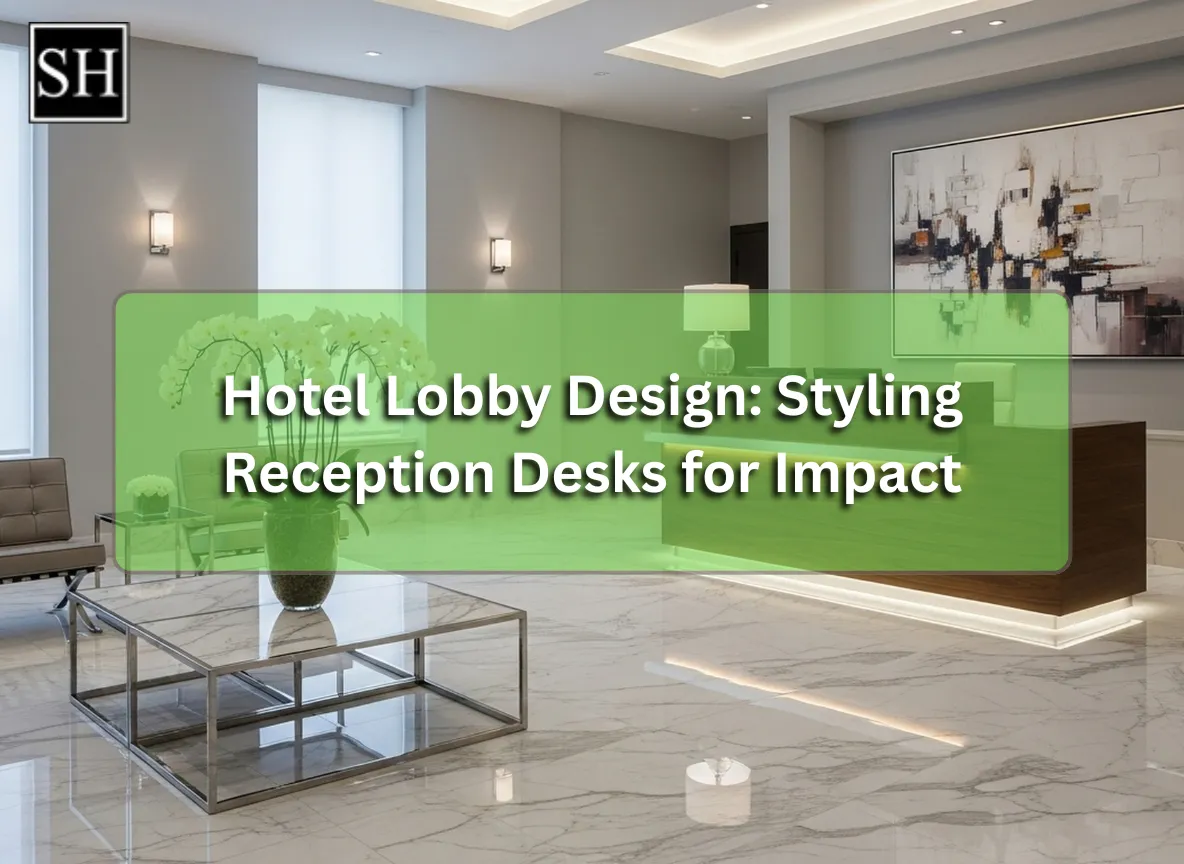
Hotel Lobby Design: Styling Reception Desks for Impact
-
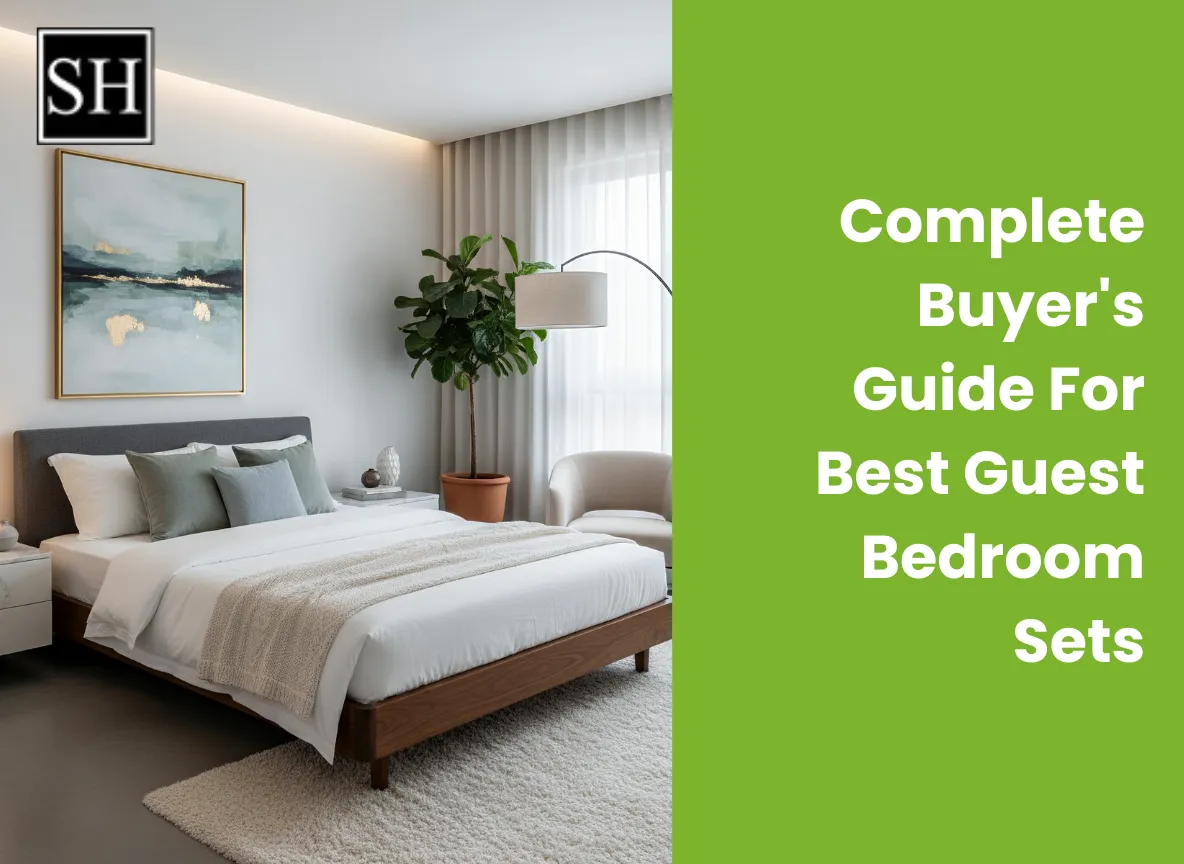
Complete Buyer's Guide For Best Guest Bedroom Sets
-
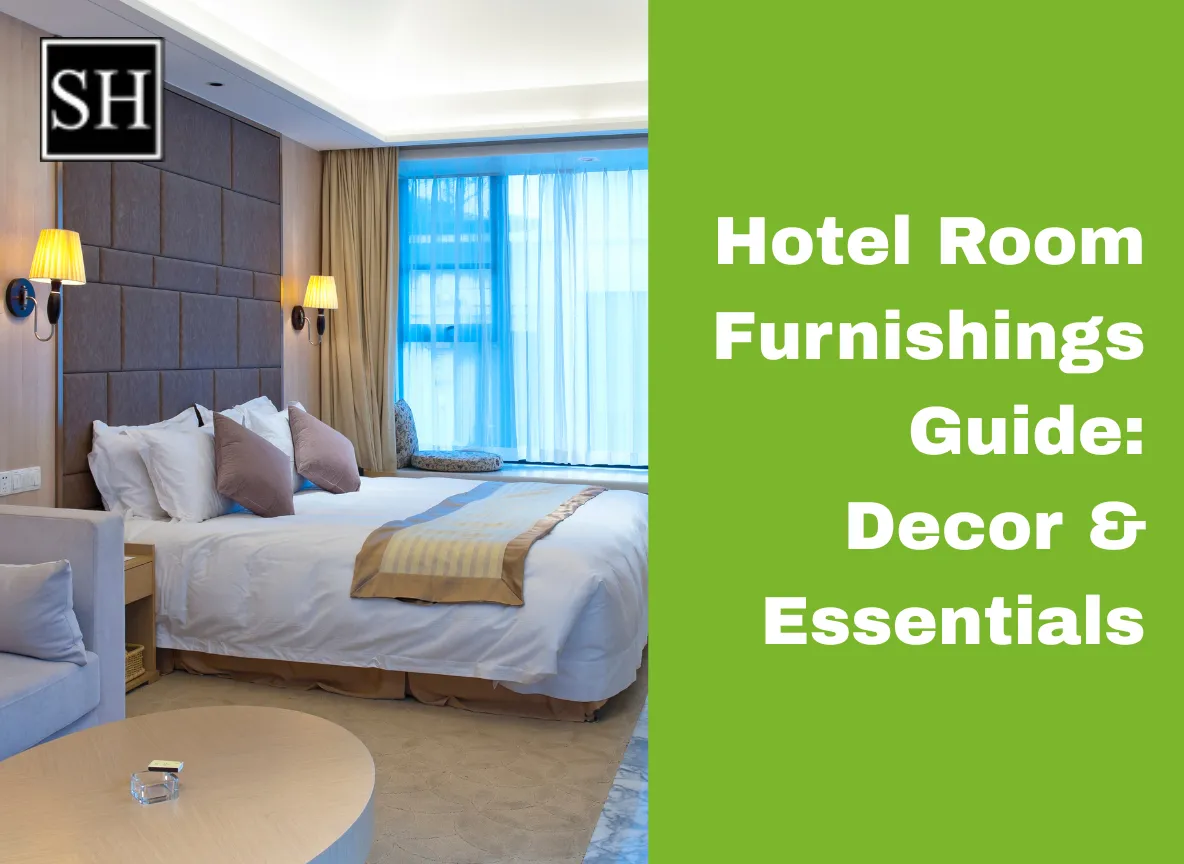
Hotel Bedroom Furnishings Guide: Decor & Essentials
-
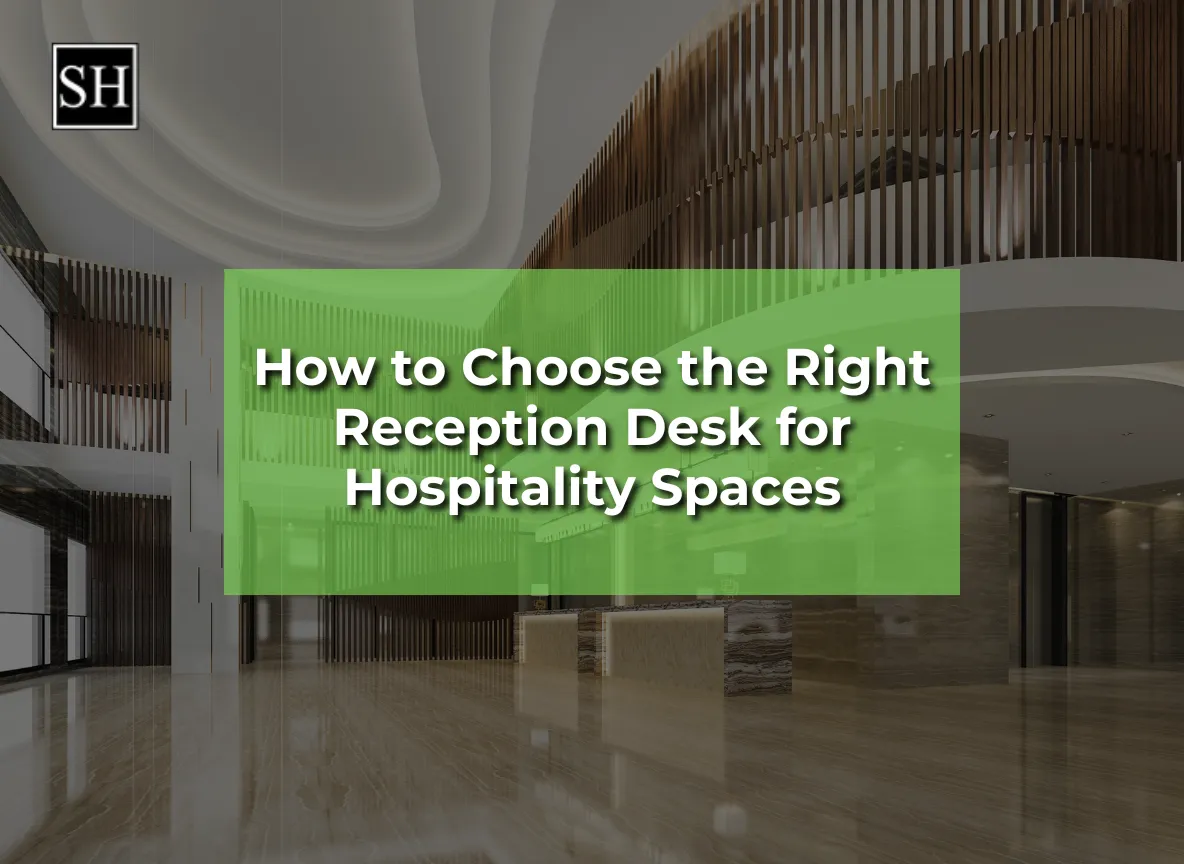
How to Choose the Right Reception Desk for Hospitality Spaces
-
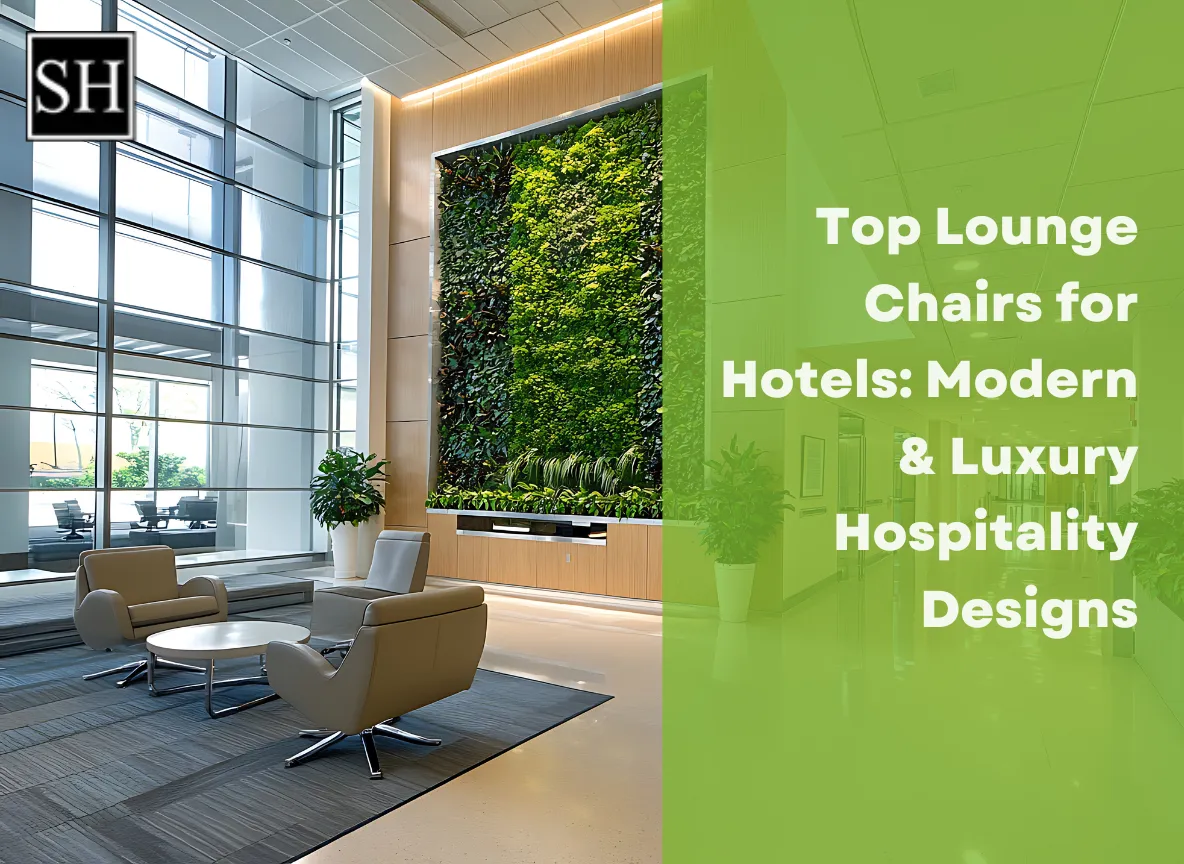
Top Lounge Chairs for Hotels: Modern & Luxury Hospitality Designs
-

How Hotels Can Choose the Best Sofas for Elderly Guests
RECENT POSTS









